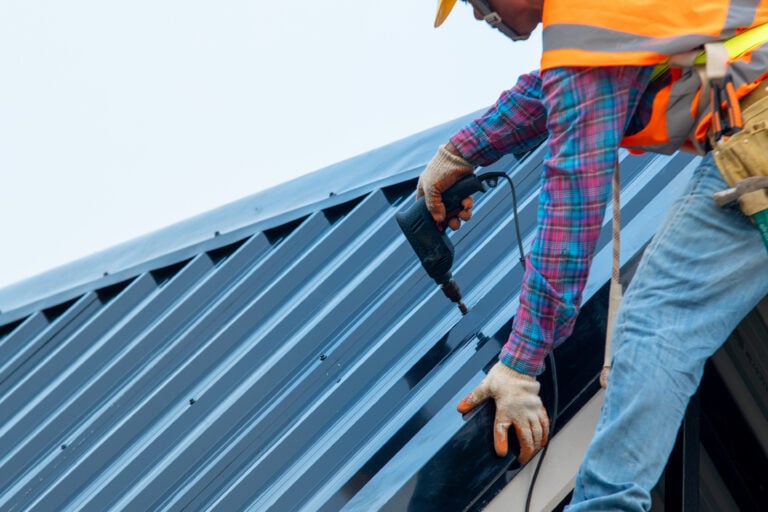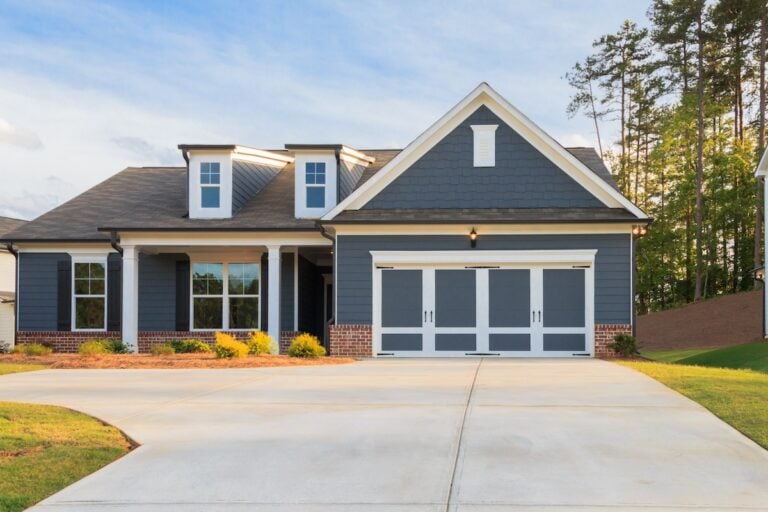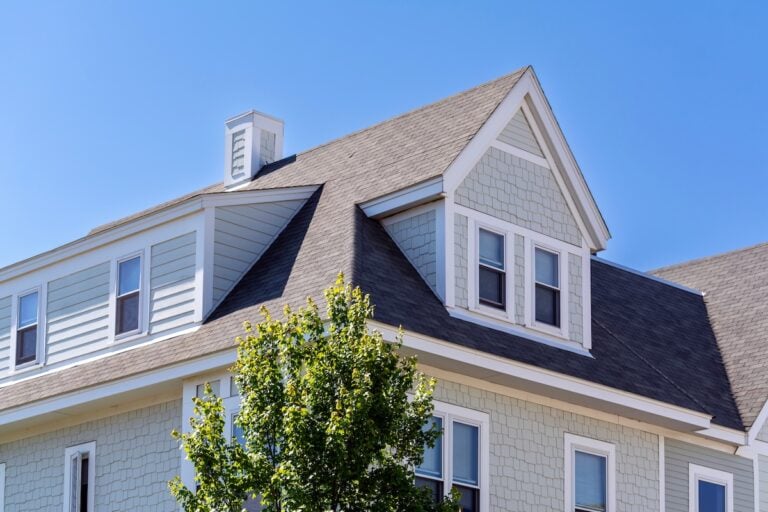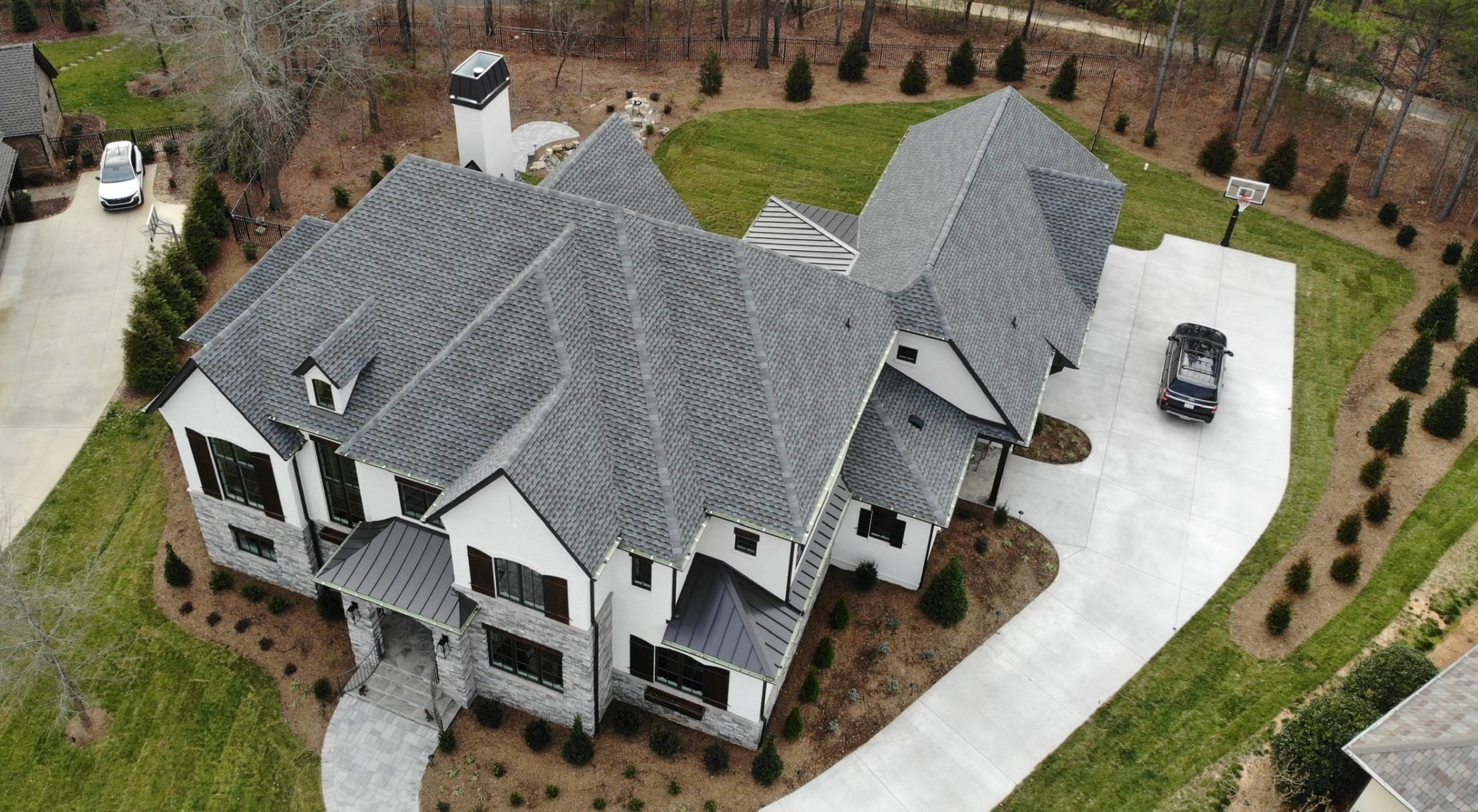How to Install Metal Roofing Like a Pro (6 Step Guide)
Posted 10.22.25 | 8 Minute Read
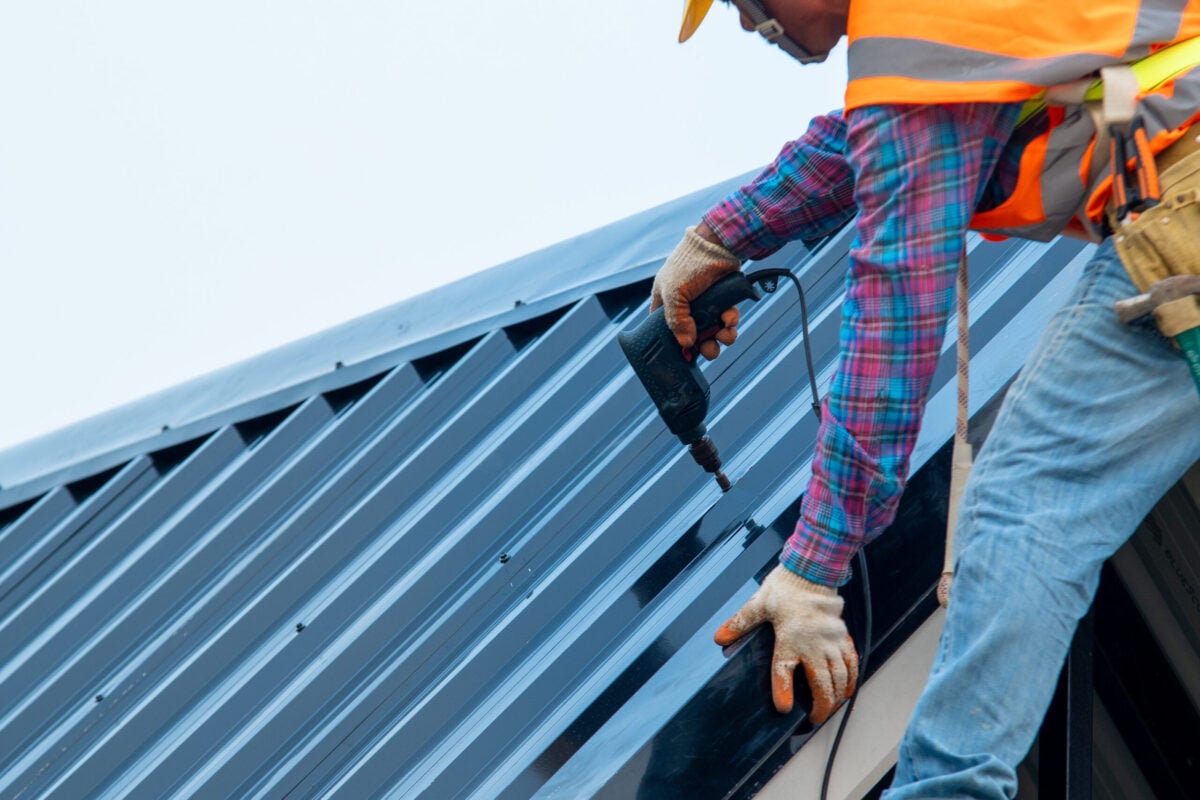
Metal roofing has quickly become one of the most popular options for homeowners across North Carolina—and for good reason. It’s durable, energy-efficient, and adds sleek, modern curb appeal to any home. But for those wondering how to install metal roofing, the process involves more than simply laying panels. It requires precision, the right tools, and a deep understanding of your roof’s structure.
Whether you’re researching materials for a renovation or preparing for a new installation in Mooresville and surrounding areas, knowing how the process works helps you make informed decisions and recognize quality workmanship. For those who prefer expert results, it’s always best to rely on trained metal roofing professionals to ensure long-lasting performance and warranty protection.
Here’s what you’ll learn in this guide:
- The top reasons homeowners are switching to metal roofing
- A clear step-by-step overview of professional installation
- Common mistakes to avoid during installation
- Maintenance and longevity tips to get the most from your investment
Why Metal Roofing Is Worth Considering
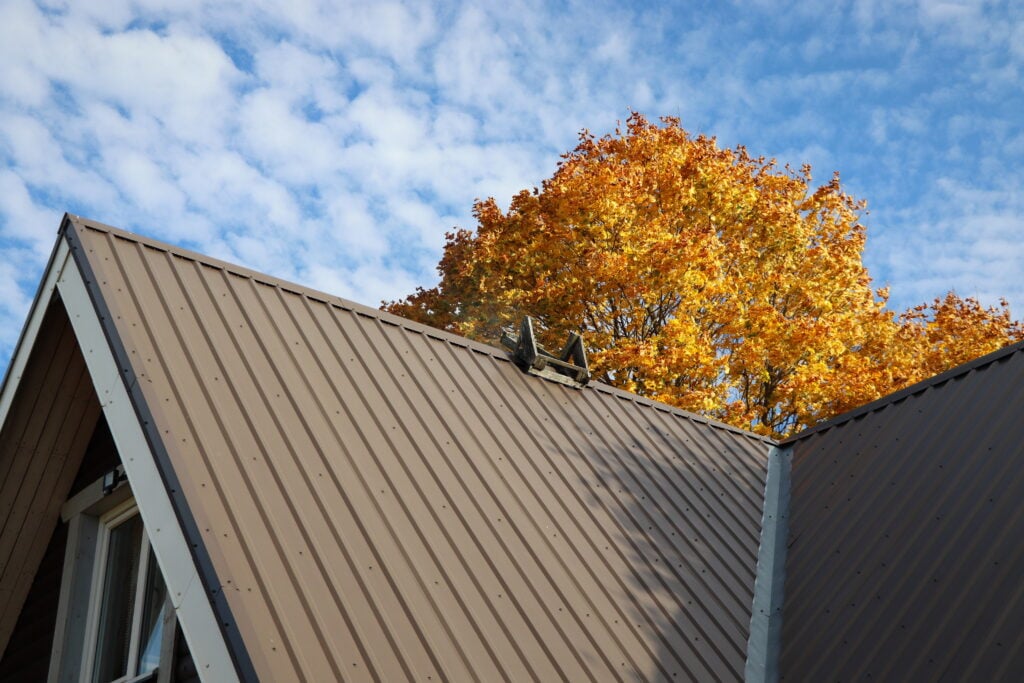
Metal roofing is one of the most advanced and versatile roofing systems available today. It combines longevity, environmental benefits, and style in a way few materials can match.
Here’s why more homeowners in Mooresville and surrounding areas are making the switch:
- Exceptional Durability: Metal roofs can last 40–70 years depending on the material, making them one of the longest-lasting options on the market.
- Energy Efficiency: Reflective coatings help reduce heat absorption, keeping homes cooler and lowering energy bills.
- Low Maintenance: Unlike asphalt shingles, metal doesn’t crack, warp, or rot. It requires minimal upkeep throughout its lifespan.
- Fire and Weather Resistance: Metal roofing is non-combustible and highly resistant to high winds, hail, and heavy rain.
- Sustainable Material: Most metal roofs contain recycled content and can be fully recycled at the end of their life cycle.
Beyond the practical advantages, metal roofing also enhances home value. Buyers appreciate the longevity and energy savings, often viewing it as a premium upgrade.
6 Steps to Install Metal Roofing Like a Professional
While the installation process can vary based on roof type and materials, these six steps outline the general procedure followed by professionals for a durable, watertight finish.
1. Prepare and Inspect the Roof Deck
Before installation begins, the existing roof surface and decking must be inspected. Any damage, rot, or moisture issues need to be addressed first.
Key preparation tasks include:
- Removing old shingles or roofing materials
- Inspecting for soft spots or damaged wood sheathing
- Installing new underlayment or vapor barriers
- Ensuring proper ventilation in the attic space
A clean, solid deck provides the foundation for a stable installation and prevents future problems such as leaks or panel distortion.
2. Install the Underlayment and Flashing
Underlayment acts as a secondary barrier that protects your home from moisture, while flashing seals joints and vulnerable areas like chimneys, valleys, and skylights.
There are two main underlayment options for metal roofing:
- Synthetic Underlayment: Lightweight, tear-resistant, and ideal for most climates.
- Peel-and-Stick Membranes: Provide extra waterproofing in high-risk areas.
Flashing is then installed around edges, valleys, and protrusions to direct water away from the roof deck. Precise flashing installation is critical to long-term waterproofing success.
3. Measure and Cut Metal Panels
Each metal panel must be cut to fit your specific roof dimensions. Precision is essential to avoid gaps or overlaps that could lead to leaks. Professionals use electric shears or specialized cutting tools to achieve clean, burr-free edges.
Common materials used include:
- Galvanized Steel: Affordable and strong for most homes.
- Aluminum: Lightweight and corrosion-resistant.
- Copper or Zinc: Premium metals that offer distinctive aesthetics and long life spans.
Proper panel alignment ensures both visual appeal and functional performance once installed.
4. Install the Metal Panels
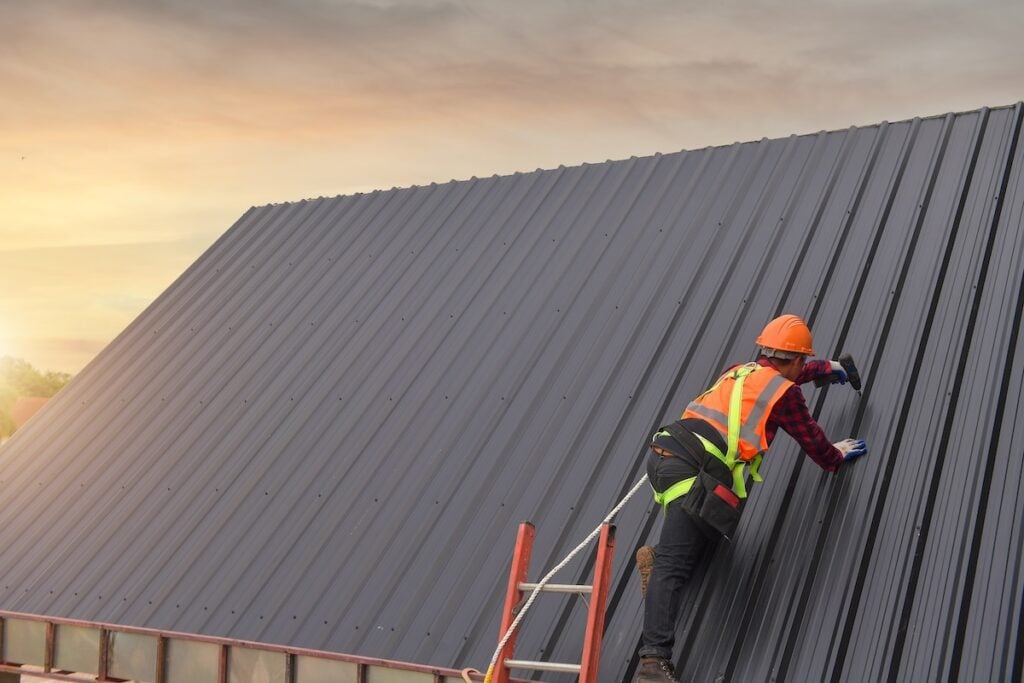
With the prep work complete, it’s time to attach the panels. The direction of installation typically starts from the eaves upward, ensuring that water naturally flows away from seams.
Installation methods vary slightly based on the roofing system:
- Exposed Fastener Systems: Panels are secured with visible screws and washers.
- Standing Seam Systems: Panels interlock, hiding fasteners beneath raised seams for a sleek, watertight finish.
During this step, installers carefully check for consistent spacing, tight fasteners, and proper overlap. Attention to detail prevents wind uplift and ensures a uniform appearance.
5. Secure Trim, Ridge Caps, and Flashing Details
Once the panels are installed, finishing elements like trim, ridge caps, and additional flashing are added. These components seal the edges and ridges where water could otherwise enter.
Important finishing details include:
- Sealing gaps around vents, skylights, and chimneys
- Installing ridge caps for ventilation and aesthetics
- Applying sealant or butyl tape under joints and overlaps
These final touches not only improve waterproofing but also give the roof its polished, professional look.
6. Inspect and Clean Up
After installation, a full inspection ensures that all panels, fasteners, and seals meet industry standards. A reputable roofing team will also remove debris, stray metal shavings, and tools from the property.
Inspectors verify:
- Proper alignment and fastening of panels
- Secure flashing and ridge caps
- Correct installation of trim and underlayment
- No sharp edges or loose materials
Once complete, your new metal roof should be watertight, visually appealing, and built to last for decades.
Mistakes to Avoid When Installing Metal Roofing
Even small errors can compromise the effectiveness of a metal roof. Here are some of the most common mistakes to avoid.
- Incorrect Fastener Placement: Screws installed too tightly or loosely can cause leaks or rust over time.
- Skipping the Underlayment: This layer is essential for moisture protection and energy efficiency.
- Poor Panel Alignment: Crooked or misaligned panels affect both appearance and water flow.
- Ignoring Ventilation: Without adequate airflow, condensation can build up, leading to mold and damage.
- Improper Flashing Installation: Inadequate sealing around joints and valleys allows water infiltration.
By understanding these pitfalls, homeowners can ensure their roofing project—whether DIY or professionally managed—follows best practices.
Comparing Metal Roofing Types
Metal roofs come in several varieties, each with its own advantages. Here’s a quick comparison to help you understand the differences.
| Metal Type | Lifespan | Cost (per sq. ft.) | Appearance | Maintenance | Best For |
| Steel | 40–60 years | $7–$12 | Wide color range, modern | Low | Most homes, versatile |
| Aluminum | 50+ years | $9–$14 | Smooth, clean finish | Very low | Coastal climates |
| Copper | 70+ years | $15–$25 | Elegant patina over time | Minimal | Historic or luxury homes |
| Zinc | 60–100 years | $12–$20 | Matte gray finish | Minimal | Long-term durability projects |
For most homes in Mooresville and surrounding areas, steel or aluminum roofs strike the best balance between cost, performance, and aesthetics.
Maintenance Tips for Long-Lasting Performance
One of the main advantages of metal roofing is its minimal upkeep. Still, a little maintenance goes a long way toward preserving its look and function.
Regular Inspections
Have your roof professionally inspected at least once a year or after severe weather. Look for loose fasteners, worn sealant, or debris buildup in valleys.
Clean Gutters and Roof Surface
Leaves and branches can trap moisture or scratch the surface coating. Keep gutters clear to maintain proper water drainage.
Avoid Harsh Chemicals
When cleaning, use mild soap and water. Harsh chemicals or abrasives can damage protective coatings and cause fading.
Address Minor Repairs Promptly
Small issues—like a missing screw or minor sealant crack—should be fixed immediately to prevent water intrusion.
Trim Nearby Trees
Branches rubbing against your roof can damage the finish. Regularly trimming overhanging limbs helps preserve its smooth surface.
With proper care, your metal roof can easily outlast traditional materials, maintaining strength and beauty for decades.
The Cost of Installing Metal Roofing
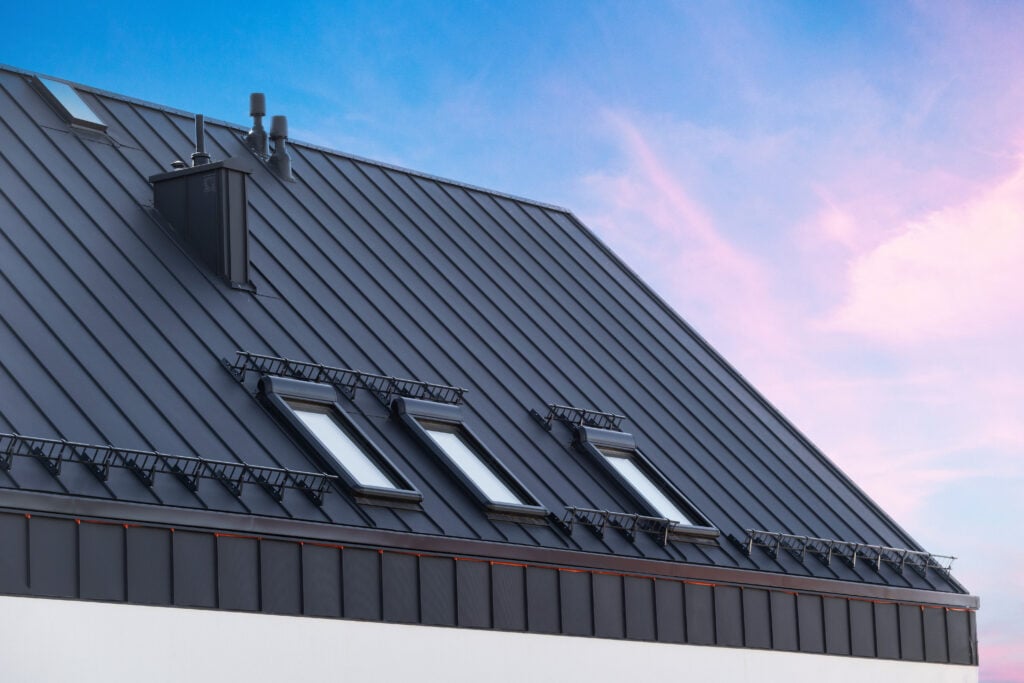
While the installation process requires precision, the long-term value is undeniable.
Average metal roof installation costs can range from $9 to $15 per square foot, depending on material type, roof size, and complexity. Though initial costs are higher than asphalt shingles, metal roofing pays off over time with lower maintenance expenses and greater longevity.
Additional factors influencing price include:
- Type of metal (steel, aluminum, copper, etc.)
- Roof design and slope
- Removal of existing materials
- Local labor rates in Mooresville and surrounding areas
- Added features like ridge vents or custom trim
Professional installation ensures your investment delivers decades of performance without frequent repairs or premature wear.
Why Professional Installation Matters
While it’s possible to install a metal roof yourself, hiring professionals is almost always the smarter choice. Skilled installers have the tools, training, and safety equipment to handle the job correctly the first time.
Benefits of hiring a professional team include:
- Warranty Protection: Many manufacturers require certified installation for full coverage.
- Precision Fit: Proper alignment prevents leaks and ensures structural integrity.
- Safety Assurance: Professionals handle steep pitches and heavy materials safely.
- Time Savings: What might take a homeowner weeks can be completed in a few days by experts.
- Quality Results: Clean lines, secure fasteners, and professional sealing deliver lasting value.
Partnering with a trusted local roofer ensures your new metal roof meets manufacturer standards while enhancing your home’s performance and curb appeal.
Ready to Upgrade to Metal Roofing?
Installing metal roofing is one of the best long-term investments you can make in your home. It delivers decades of protection, energy savings, and beauty—all with minimal maintenance.
If you’re ready to upgrade your home in Mooresville and surrounding areas, our expert team is here to help. We specialize in professional installation and work with top-quality materials to ensure every project meets the highest standards of craftsmanship.
To get a detailed estimate or schedule your next roof inspection, contact us today. Let’s create a durable, stylish roof that stands strong for years to come.
